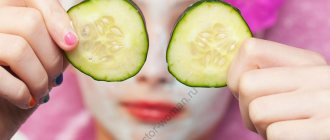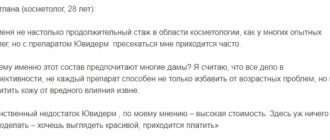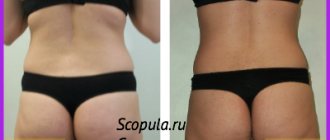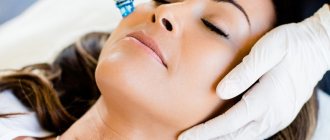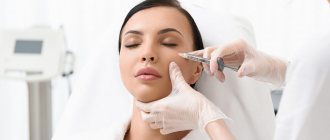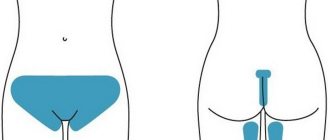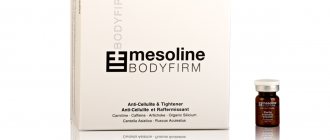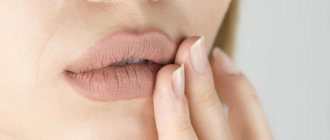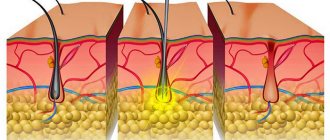Today, not only girls, but also young guys wear earrings in their ears. And if 20 years ago everyone was limited to one small puncture, or at most 2-3 tiny dots, now it is extremely fashionable to make tunnels in the ears. However, over time, there may be a desire to get rid of such an extravagant attribute, then ugly elongated holes will remain in the lobes.
Is it possible to heal holes in the ears? And how exactly to do this?
Contacting the salon
Today, ears are pierced in the most unexpected places. The hole is made not only in the lobe, but also on the helix of the auricle and on the inside of the cartilage. They also turn to salons to make tunnels. These are holes of 1-5 cm, sometimes more. They are made in two ways. A more correct method is to punch a small hole and gradually stretch it to the desired size. In the process, the rim rings change from smaller to larger. A more traumatic method is to immediately punch a hole of the required size in the lobe. Typically, this procedure is carried out for those who want to receive tunnels immediately.
And if the earlobe can be pierced at home, with a special disposable pistol or even a sterile needle, then you should not experiment with tunnels and holes in other parts of the auricle. It is best to do them in a salon: in proper conditions and ensuring the sterility of the instrument.
Earlobe plastic surgery after tunnels
The operation performed to correct the earlobes is called otoplasty. Its goal is not just to sew up the hole, but to return the ears to their correct shape and restore damaged or missing segments.
Surgical suturing of holes after ear tunnels is carried out in several cases:
- Scars that correct not only after unsuccessful piercing, but also injuries.
- Elimination of hyperextension of the earlobe after earrings. Jewelry stretches it because the lobe consists of fatty tissue and skin, which has a natural elasticity limit. Stretching can occur not only from tunnels, but also from ordinary earrings that are too heavy.
- A tear where the jewelry was worn.
What happens to ear holes over time?
The problem with tunnels is that they only look attractive when they are fitted with special rims. If you take them off, the lobes droop unsightly. Therefore, having such decoration, it is very difficult to change the image from informal to business. That is why some of the people who once made tunnels decide to get rid of them. And they begin to think about how to quickly heal holes in their ears.
But one should not assume that only owners of huge tunnels need to solve this problem. In fact, many are interested in how to heal holes in the ears, and among them:
- Those who like to wear large, massive jewelry, which causes the holes to take on an unattractive, elongated shape.
- People who, for physiological reasons, have developed scar tissue in the form of protruding balls at the puncture site.
- Those who are unlucky with the salon, due to which the holes in the ears are not at the same level or at an angle, which is noticeable when you wear jewelry.
- Elderly people whose ear hole is deformed.
Causes of sprains
There are several reasons why earlobes may stretch to the point of needing correction. A person may experience natural stretching due to wearing the piercing for long periods of time, due to age, gravity, and weakened tissue from wearing jewelry that pulls. On the other hand, the sprain may have resulted from an injury that stretched or tore the lobes—or they may have participated in a practice of earlobe stretching that they now want to reverse.
A plastic surgeon can perform reconstructive surgery known as stretched earlobe shaping. Also known as otoplasty, it is a plastic surgery procedure that reshapes large lobes or corrects existing injuries and deformities.
Far from being a modern practice, the activity known as lobe stretching has been around for centuries.
Even Ozzy Ice had stretched earlobes. His mummified body from 3300 BC was discovered near Austria and Italy with an earlobe stretched nearly half an inch.
Cultures spanning from Nigeria in West Africa to Mursi women and Lahu tribes, from Thailand to Asian tribes, have practiced ear stretching. Higher class people from the Aztec culture used gold and silver plugs to stretch their lobes, while others used animal bones, gemstones and wood to perform the same body stretching process.
Modern ear stretching is also a popular practice, however some tend to completely change the body modification once they tire of the processor no longer needing stretched earlobes.
How long will it take for a hole in the ear to heal?
How to heal holes in ears? The first thing to do is take off your earrings. Over time, the ears will begin to grow over. How long this will take depends on the physiological characteristics of the person. For some, the holes become covered with a film within a day or two, while others can walk for years without their ears healing. Another important factor is how long ago the punctures were made. The timings are as follows:
- If you immediately insert the jewelry after punching and then take it out, then after 5-10 minutes it will be difficult to insert the earring into the same hole. This is due to tissue swelling and narrowing of the canal.
- A fresh puncture heals from 2 weeks to 1.5 months.
- If you wear jewelry for a couple of months after the piercing, the channel will be completely formed. But it can still heal - in 1.5-2 months.
- If you wear the jewelry in your ear for 1 to 3 years, the hole will shrink with a film within 3-6 months. However, the earring can still be inserted into such a hole without re-punching, but it will be a little painful.
- Wearing earrings for more than 5 years makes it impossible for the holes to heal spontaneously. At most, only a thin film may appear.
Also, many are interested in whether it is possible to fill the ears without sewing up the holes after the tunnels. The same rules apply to them in many respects - if the holes are fresh, then they can heal on their own. True, most often such an ear has an ugly, unnatural shape. The size of the tunnels is also of great importance - the more the hole is stretched, the less likely it is that it will heal on its own, without the help of cosmetic surgery.
What is a keloid scar?
Normally, the pierced area of the auricle remains soft, uniform in color and no different from neighboring tissues. But in some cases, piercing provokes the formation of keloid scars. Rough, dense to the touch fabric protrudes above the surface of the skin and causes serious damage to the appearance. It is difficult to completely get rid of keloids, but thanks to modern techniques it is possible to make imperfections almost invisible.
A keloid is an overgrowth of connective tissue in areas of the body that have been subject to injury, cuts, or other damage. These scars differ from a regular scar:
- larger area exceeding the size of the original wound;
- increased sensitivity;
- heterogeneous structure;
- uneven edges;
- irregular shape;
- changed shade - red or bluish.
A keloid scar after ear piercing can cause serious discomfort - itching, pain, creating a feeling of tightness, numbness or increased sensitivity. Keloids never go away on their own. In addition, over time they tend to grow even more, engulfing neighboring healthy tissues. Often, surgical intervention only worsens the picture - the scars recur again and again. For many victims, the long-term struggle with keloids leads to despair.
Folk method
How to heal holes in the ears using traditional methods? I would like to immediately note that there are no miracle herbs that can instantly heal tissue. But some recommend a very barbaric technique - stretch the earlobe and insert a hot needle into the hole. The operating principle is that the formed canal walls are burned, and the exposed tissues grow together. As a result, a tiny whitish scar should remain on the lobe, almost invisible to others.
But not everyone will risk trying this dangerous and traumatic method, and its effectiveness is highly questionable.
Possible problems
Patients with earlobes that have been stretched as part of the body art trend may find some problems with small and large earrings that they did not expect.
Such body modifications may not appear professional and may limit certain career options. Perhaps the meaning of the stretching ritual has changed them on a personal level, and they want to reflect these new feelings.
This process also sometimes results in an unpleasant odor, which is also not conducive to pleasure.
Scar removal creams
The next method to remove a hole in the ear from an earring is to use various creams to absorb scar tissue. They are applied to the problem area or made as compresses at night. Usually you have to wait quite a long time for results - weeks, and sometimes months.
Also, judging by customer reviews, fresh punctures heal well and newly formed scar tissue resolves. But if the problem is more than 3 years old, then this remedy may not help.
What is the reason for the appearance of keloid scars after ear piercing?
It is customary to distinguish several types of such scars. The first are called external and occur at the site of damage of any origin. Including after piercing. The second are spontaneous (internal) , sprouting from the inside with intact, unchanged skin.
The causes of keloids are still being studied. It is only known that the predisposition to the formation of rough scars is genetically determined. Also, keloid scars are most actively formed in women of reproductive age. Some sources link the appearance of these scars to hormonal status. Also, the formation of keloids depends on skin color. For example, African Americans are more susceptible than others to the proliferation of connective tissue even with the slightest injury.
Human immunity plays an important role in spontaneous scar enlargement. Often, the body’s own defense mechanisms provoke increased production of collagen fibers, the main component of scar tissue. Some researchers believe that keloids are an inflammatory response to ear piercing and the insertion of metal earrings. But do not forget about the conditions of the procedure, hygiene and recommendations of the cosmetologist.
"Kontraktubeks" and its analogues
What and how to fill holes in the ears? Most often, the drug “Contractubex” is recommended for healing punctures and resolving scars on the auricle. This is a combined agent with anti-inflammatory, antithrombotic and keratolytic effects. The active ingredients of Contractubex stimulate cellular regeneration.
The drug is available in the form of a gel. The medication consumption is 0.5 cm per area of 25 cm2, so for the ears one tube is enough for a long time, even with long-term treatment. The gel is applied 2-3 times a day. The course of treatment is 1 month for fresh scars, and up to six months for old dense scars. In some cases, it is advisable to extend treatment to one year.
The following medications can also be used against scars:
- "Dexaven";
- "Dexazon";
- "Emeran";
- "Fluorocort".
Preventative measures against scar formation
Properly selected external care has a great influence on the formation of scar tissue and its further regeneration. Strict adherence to hygiene rules makes it possible to prevent the appearance of scars. Experts recommend the following steps to help reduce the risk of keloid formation after piercing.
So, what should you do after getting your ears pierced ?
- Under no circumstances should you immediately put on gold or silver earrings, they can provoke an inflammatory process. It is necessary to use earrings made of a special hypoallergenic alloy.
- It is very important to regularly clean the puncture site - treat it with antiseptics (chlorhexidine, miramistin), and then use panthenol-based healing agents.
- To prevent the formation of scars, you can use silicone-based gels for the first month - only after consultation with your doctor.
Visual inspection must be carried out regularly. Note any abnormal healing. Redness, soreness, swelling or lumps are a reason to make an appointment with a specialist. A keloid noticed in time is 90% successful for treatment!
Plastic surgery
How to heal holes in ears? According to reviews, plastic surgery is the best way to deal with this problem. Contacting the clinic is recommended in all particularly difficult cases, for example, when large holes remain after the tunnels, when the lobes are severely deformed, when no other remedy has worked.
How do plastic surgeons fill holes in the ears? They suture them or remove the defect with a laser. The procedure is most often performed under local anesthesia, and only in particularly severe cases will you have to go to the clinic. After the hole is sutured and a normal ear is formed, the patient is sent home with a patch on the seam. The ear usually becomes swollen, swollen and painful after the procedure, so patients are prescribed painkillers. The stitches are removed after 7-10 days, and the entire recovery period will take 3 months. You will not be able to pierce your ear for a year after surgery.
As a result of the operation, a person is left with a small, barely noticeable scar. It can be sanded down over time to make it even less noticeable.
Graduation of earrings
Lobe piercings can begin as tiny holes when a person first gets their ears pierced—sometimes as early as infancy. However, the petite original size of the piercing can grow to larger holes over a period of time due to heavy or larger jewelry that stretches the petals seemingly beyond the point of no return.
While some people who practice earlobe stretching wear heavy jewelry on purpose, others don't want to. Fashion followers may want to wear huge beautiful earrings that are large in shape. But sometimes the side effects of sporting weighty earrings mean that the wearer may involuntarily stretch and weaken the lobes. Prolonged use of their favorite dangly earrings may place additional unwanted tension on the lobes.
Additionally, frequently wearing heavy earrings—or even medium-heavy earrings—on days when strong winds or rains pull on jewelry even more than usual puts extra stress on the lobes and makes them more susceptible to injury. Some people with extensive lobe damage may only be able to wear pierced earrings after cosmetic surgery to reconstruct the lobe.
Contraindications to cosmetic surgery
Cosmetic correction of the auricle is considered a simple operation, but this procedure has a number of contraindications:
- sensitivity to certain medications;
- the presence of a current infectious disease - this can be either a common cold or more serious diseases such as HIV or hepatitis;
- poor blood clotting;
- time of menstruation (in women);
- taking anticoagulants;
- state of alcoholic intoxication;
- local inflammation of the skin.
Most of the contraindications are temporary. And the operation becomes possible when the patient’s condition stabilizes.
Price
The cost of the operation varies depending on the clinic. The price can be 10,000 or 30,000 rubles, or higher, depending on the status of the medical institution. You also need to understand that the price lists indicate the price for correcting one ear, but a person has two, so the price needs to be doubled. In addition, the cost of the operation itself is added to the time spent in the clinic - from 1000 rubles per day. So, when making tunnels in your ears, you need to think about how much this jewelry could ultimately cost.
